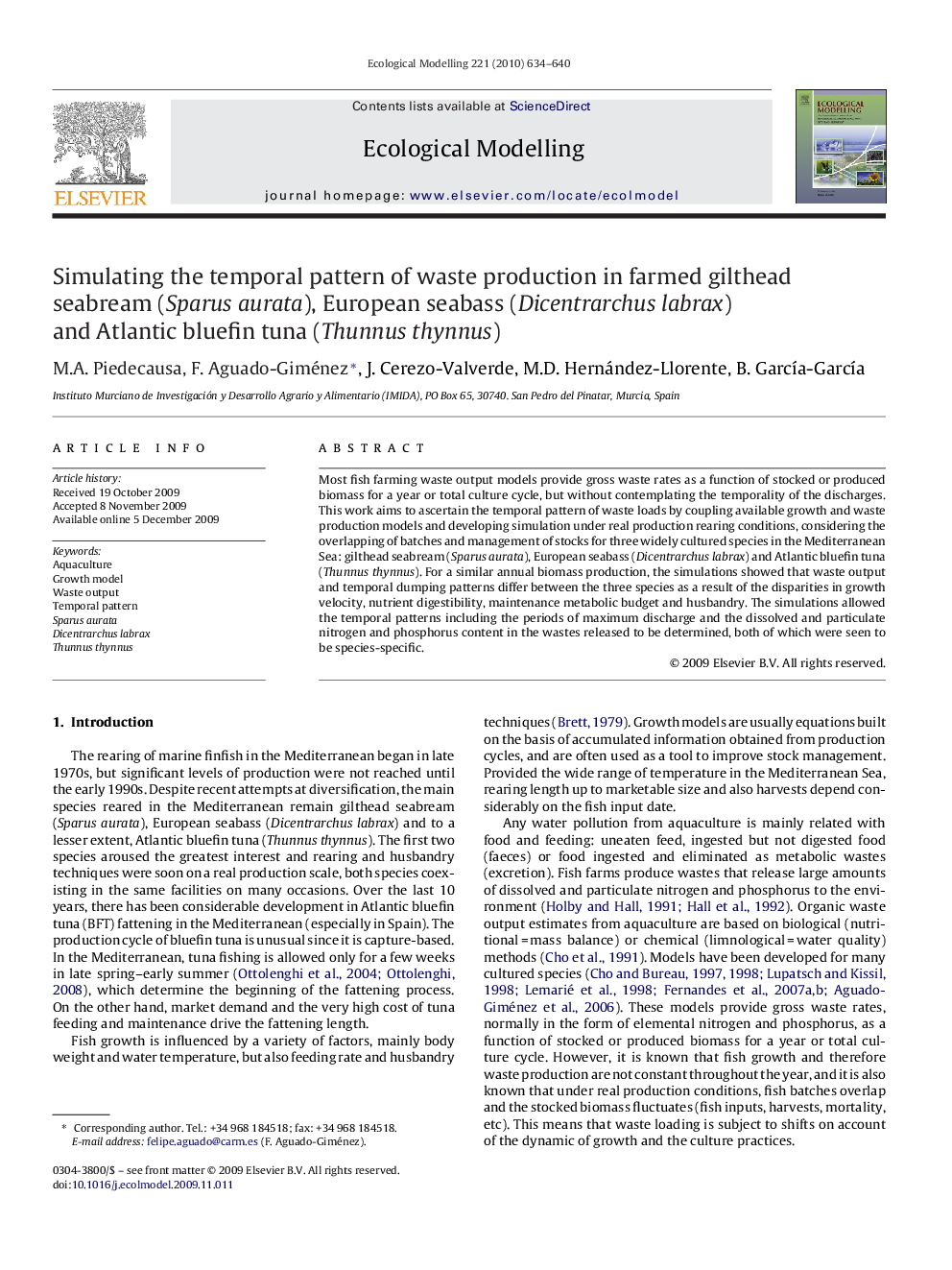| Article ID | Journal | Published Year | Pages | File Type |
|---|---|---|---|---|
| 4377092 | Ecological Modelling | 2010 | 7 Pages |
Abstract
Most fish farming waste output models provide gross waste rates as a function of stocked or produced biomass for a year or total culture cycle, but without contemplating the temporality of the discharges. This work aims to ascertain the temporal pattern of waste loads by coupling available growth and waste production models and developing simulation under real production rearing conditions, considering the overlapping of batches and management of stocks for three widely cultured species in the Mediterranean Sea: gilthead seabream (Sparus aurata), European seabass (Dicentrarchus labrax) and Atlantic bluefin tuna (Thunnus thynnus). For a similar annual biomass production, the simulations showed that waste output and temporal dumping patterns differ between the three species as a result of the disparities in growth velocity, nutrient digestibility, maintenance metabolic budget and husbandry. The simulations allowed the temporal patterns including the periods of maximum discharge and the dissolved and particulate nitrogen and phosphorus content in the wastes released to be determined, both of which were seen to be species-specific.
Keywords
Related Topics
Life Sciences
Agricultural and Biological Sciences
Ecology, Evolution, Behavior and Systematics
Authors
M.A. Piedecausa, F. Aguado-Giménez, J. Cerezo-Valverde, M.D. Hernández-Llorente, B. GarcÃa-GarcÃa,
